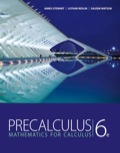
Concept explainers
(a)
To find:the roots of the equation using middle term factorization.
(a)
Answer to Problem 123E
The solution of the given equation
Explanation of Solution
Given:
Concept used:
The First it can solve the given equation through middle term factorization by taking common factor and if it doesn’t get factorize then use discriminant method to solve the given
Calculation:
First by solving the equation through middle term factorization
If it doesn’t get factorized then it can be solved from discriminant method to solve the given quadratic equation.
Where the equation is defined by
Where s =sum of the two roots and p= product of two roots
Let the two roots be
Sum of the roots =
Here in given solution
Here need to find 2 number whose sum is
Which is possible by
So, two numbers are
Since,
So,
Hence, the solution of the given equation
(b)
To find:the roots of the equation using middle term factorization or by quadratic formula.
(b)
Answer to Problem 123E
The solution of
Explanation of Solution
Given:
Concept used:
The First it can solve the given equation through middle term factorization by taking common factor and if it doesn’t get factorize then use discriminant method to solve the given quadratic equation where
Calculation:
Here the equation is defined by
Where s =sum of the two roots and p= product of two roots
Let the two roots be
Sum of the roots =
Here in given solution
This is not possible since sum of the root and product of the root is not equal so it cannot be solved from middle term factorization method.
It can be solved from discriminant method:
Here
Hence the solution of
(c)
To prove:that the quadratic equation has two roots which when multiply give product of the root C and which when sum give sum of the root B.
(c)
Answer to Problem 123E
It is true that two roots which when multiply give product of the root C and which when sum give sum of the root B.
Explanation of Solution
Given:
Concept used:
Using discriminant method to solve the given quadratic equation
where
Calculation:
Chapter 1 Solutions
EBK PRECALCULUS: MATHEMATICS FOR CALCUL
- Consider the following system of equations, Ax=b : x+2y+3z - w = 2 2x4z2w = 3 -x+6y+17z7w = 0 -9x-2y+13z7w = -14 a. Find the solution to the system. Write it as a parametric equation. You can use a computer to do the row reduction. b. What is a geometric description of the solution? Explain how you know. c. Write the solution in vector form? d. What is the solution to the homogeneous system, Ax=0?arrow_forward2. Find a matrix A with the following qualities a. A is 3 x 3. b. The matrix A is not lower triangular and is not upper triangular. c. At least one value in each row is not a 1, 2,-1, -2, or 0 d. A is invertible.arrow_forwardFind the exact area inside r=2sin(2\theta ) and outside r=\sqrt(3)arrow_forward
- A 20 foot ladder rests on level ground; its head (top) is against a vertical wall. The bottom of the ladder begins by being 12 feet from the wall but begins moving away at the rate of 0.1 feet per second. At what rate is the top of the ladder slipping down the wall? You may use a calculator.arrow_forwardExplain the focus and reasons for establishment of 12.4.1(root test) and 12.4.2(ratio test)arrow_forwarduse Integration by Parts to derive 12.6.1arrow_forward
- Explain the relationship between 12.3.6, (case A of 12.3.6) and 12.3.7arrow_forwardExplain the key points and reasons for the establishment of 12.3.2(integral Test)arrow_forwardUse 12.4.2 to determine whether the infinite series on the right side of equation 12.6.5, 12.6.6 and 12.6.7 converges for every real number x.arrow_forward
 Calculus: Early TranscendentalsCalculusISBN:9781285741550Author:James StewartPublisher:Cengage Learning
Calculus: Early TranscendentalsCalculusISBN:9781285741550Author:James StewartPublisher:Cengage Learning Thomas' Calculus (14th Edition)CalculusISBN:9780134438986Author:Joel R. Hass, Christopher E. Heil, Maurice D. WeirPublisher:PEARSON
Thomas' Calculus (14th Edition)CalculusISBN:9780134438986Author:Joel R. Hass, Christopher E. Heil, Maurice D. WeirPublisher:PEARSON Calculus: Early Transcendentals (3rd Edition)CalculusISBN:9780134763644Author:William L. Briggs, Lyle Cochran, Bernard Gillett, Eric SchulzPublisher:PEARSON
Calculus: Early Transcendentals (3rd Edition)CalculusISBN:9780134763644Author:William L. Briggs, Lyle Cochran, Bernard Gillett, Eric SchulzPublisher:PEARSON Calculus: Early TranscendentalsCalculusISBN:9781319050740Author:Jon Rogawski, Colin Adams, Robert FranzosaPublisher:W. H. Freeman
Calculus: Early TranscendentalsCalculusISBN:9781319050740Author:Jon Rogawski, Colin Adams, Robert FranzosaPublisher:W. H. Freeman
 Calculus: Early Transcendental FunctionsCalculusISBN:9781337552516Author:Ron Larson, Bruce H. EdwardsPublisher:Cengage Learning
Calculus: Early Transcendental FunctionsCalculusISBN:9781337552516Author:Ron Larson, Bruce H. EdwardsPublisher:Cengage Learning





